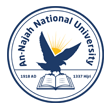Abstract
In recent years, dependence on smartphones is seen to be the rise. Despite its numerous communicative affordances, past research suggests potential adverse effects when smartphones are over-used. The primary objective of this study was to estimate the prevalence of Smart Phone Addiction (SPA) as it connects to smartphone usage and associated factors among An-Najah medical and health sciences students in Palestine. A cross-sectional design and convenient sampling technique were used to select eligible students from different programs in the faculty of Medicine and Health Sciences at the An-Najah National University. Three hundred sixty-seven students were recruited. The Smartphone Addiction Scale-Short Version (SAS-SV) was used to explore the prevalence of SPA. The SPA prevalence was found to be 37.9% among medical and health sciences university students. In comparison to those in their fourth year or higher, prevalence among first-year students was highest (OR=0.17, p-value=0.022), representing a significant statistical difference. The daily duration of smartphone use in hours when compared with more than 4 hours and 2-4 hours revealed significant statistical differences with (OR=2.90, p-value=0.003). Other factors (age, gender, university program, cigarette smoking, study year, history of chronic diseases) had no statistical differences when compared with the prevalence of SPA. The Prevalence of SPA was high when compared with other studies 37.9% among medical and health sciences university students globally. This high SPA was associated with first-year students and their use of smartphones (SP) for more than 4 hours. This study may shed some light on the prevalence of SPA and its relationship with socio-demographic and lifestyle factors in regions across Palestine.
Digital Object Identifier (DOI)
10.59049/2790-0231.1097
Recommended Citation
Sarhan, Adnan
(2024)
"Prevalence and Associated Factors of Smartphone Addiction Among Medical and Health Sciences University Students: A Cross-Sectional Study,"
Palestinian Medical and Pharmaceutical Journal: Vol. 9
:
Iss.
1
, Article 1.
Available at: https://doi.org/10.59049/2790-0231.1097


